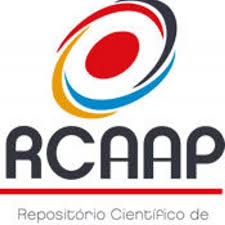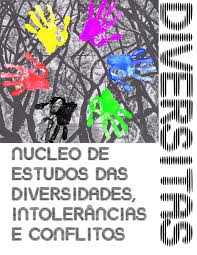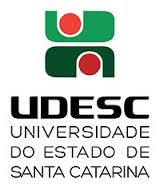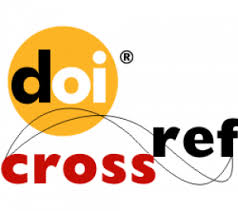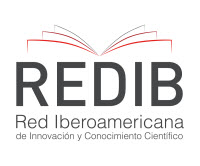A aprendizagem dos clíticos de terceira pessoa do espanhol em habilidades de compreensão e de produção: o papel da intervenção instrucional
Resumo
Neste estudo, investigamos a interação entre a intervenção instrucional e os clíticos de terceira pessoa do espanhol, classificados como estruturas simples e complexas, em habilidades de compreensão e de produção. Partimos de conceitos, relacionados à Instrução com Foco na Forma, tais como: instrução explícita, instrução com foco na forma isolada, instrução com foco na forma integrada, entre outras definções, da pesquisadora canadense Nina Spada. Para fins de tratamento dos dados, utilizamos o software International Business Machine Statistical Package for Social Studies (SPSS), a partir do qual fizemos uso de frequência relativa, teste de χ2 e teste de ANOVA de medidas repetidas. Fizeram parte deste estudo 10 participantes, alunas de um curso de Letras, de uma universidade pública. Os resultados apontaram que, a depender do tipo de análise (intra ou inter clítico), as formas simples e complexas apresentaram comportamento distinto, em habilidades de recepção e de produção.
Palavras-chave
Texto completo:
PDFReferências
DOUGHTHY, C; WILLIAMS, J. Focus on form: theory, research, and practice. (Ed). Focus on form in classroom second language acquisition. Cambridge: CUP, 1998.
ELLIS, R. Introduction: Investigating form-focused instruction. Language Learning, S1: Supplement 1, p.1-46, 2001.
LYSTER, R.; RANTA, L. Corrective feedback and learner uptake negotiation of form in communicative classroom. Studies in second Language Acquisition (SSLA), v.9, p. 37-66, 1997.
LONG, M. .Focus on form: a design feature in language teaching methodology. In: DE BOT, K. et al. (Ed.). Foreign – Language Research in Cross-Cultural Perspective. Amsterdam: Benjamins, 1991, p. 39-52.
LONG, M; ROBINSON, P. Focus on form: theory, research, and practice. In: DOUGTHY, C; WILLIAMS. J. (Ed). Focus on form in classroom second language acquisition. Cambridge; CUP, 1998.
NORRIS, J.; ORTEGA, L. Efectiveness of L2 instruction: A research synthesis and quantitative meta-analysis. Language Learning, 50, 417-528, 2000.
SWAIN, M. Three functions of output in second language learning. In: COOK, G.; SEIDLHOFER, B. (Orgs.). Principles and practice in applied linguistics: Studies in honour of H. G. Widdowson. Oxford, UK: Oxford University Press, 1995, p. 125-144.
SWAIN, M. Atención a la forma através de la reflexión consciente. In: DOUGHTY, C.; WILLIAMS, J. (orgs.).Atención a la Forma en la Adquisición de Segundas Lenguas en el aula. Traduccción y Edición Española Editorial Edinumen, 1998.
SWAIN, M. The output hypothesis: Theory and research. In: HINKEL, E. (Org.). Handbook on research in second language teaching and learning. New Jersey: Lawrence Erlbaum Associates, 2005, p. 471-483.
SWAIN, M.; LAPKIN, S. Problems in output and cognitive processes they generate: a step toward second language learning. Applied Linguistics, v. 16, p. 371-391, 1994.
SPADA, N. Form-focused instruction and second language acquisition: A review of classroom and laboraty research. Language Teaching. 30, 73-87. 1997.
______. Beyond form-focused instruction: Reflections on past, present and future research. Language Teaching, 44, 225-236, 2010.
______. Instructed second language acquisition research and its relevance for L2 teacher education. Education Matters, v. 2, 41-54. 2014.
______. Form-focused instruction: isolated or integrated? TESOL Quartely, 42(2), 181-207. 2005.
SPADA, N.; TOMITA, Y. Interactions between type of instruction and type of language feature: A meta-analysis. Language Learning, 60(2), p. 1-46, 2010.
SPADA, N. (2018). Isolating or integrating attention to form in communicative instruction: A dilemma? Babel, 7-12.
SPADA, N., JESSOP, L., SUZUKI, W., TOMITA, Y. & Valeo (2014). Isolated and integrated formfocused instruction: Effects on different types of L2 knowledge. LanguageTeaching Research, 453-473
SHINTANI, N.; LI, S.; ELLIS, R. Comprehension-Based Versus Production-Based Grammar Instruction: A Meta-Analysis of Comparative Studies. Language Learning, v.63, n.2, 2013 p .296-329.
VALEO, A. & SPADA, N. (2015). Is there a better time to focus on grammar? Teacher and learner views. TESOL Quarterly, 314-339
WILLIAMS, J.; EVANS, J.¿Qué clase de atención y a qué formas?Atención a la Forma en la Adquisición de Segundas Lenguas en el aula. Traduccción y Edición Española Editorial. Edinumen, 1998.
YOKOTA, R. O que eu falo não se escreve. E o que eu escrevo alguém fala? A variabilidade no uso objeto direto anafórico na produção oral e escrita de aprendizes brasileiros de espanhol. 2007. 219 p. Tese (Doutorado em Letras),Universidade de São Paulo - USP, São Paulo, 2007
Apontamentos
- Não há apontamentos.
ISSN eletrônico: 1984-5677
ISSN impresso: 1519-0994






